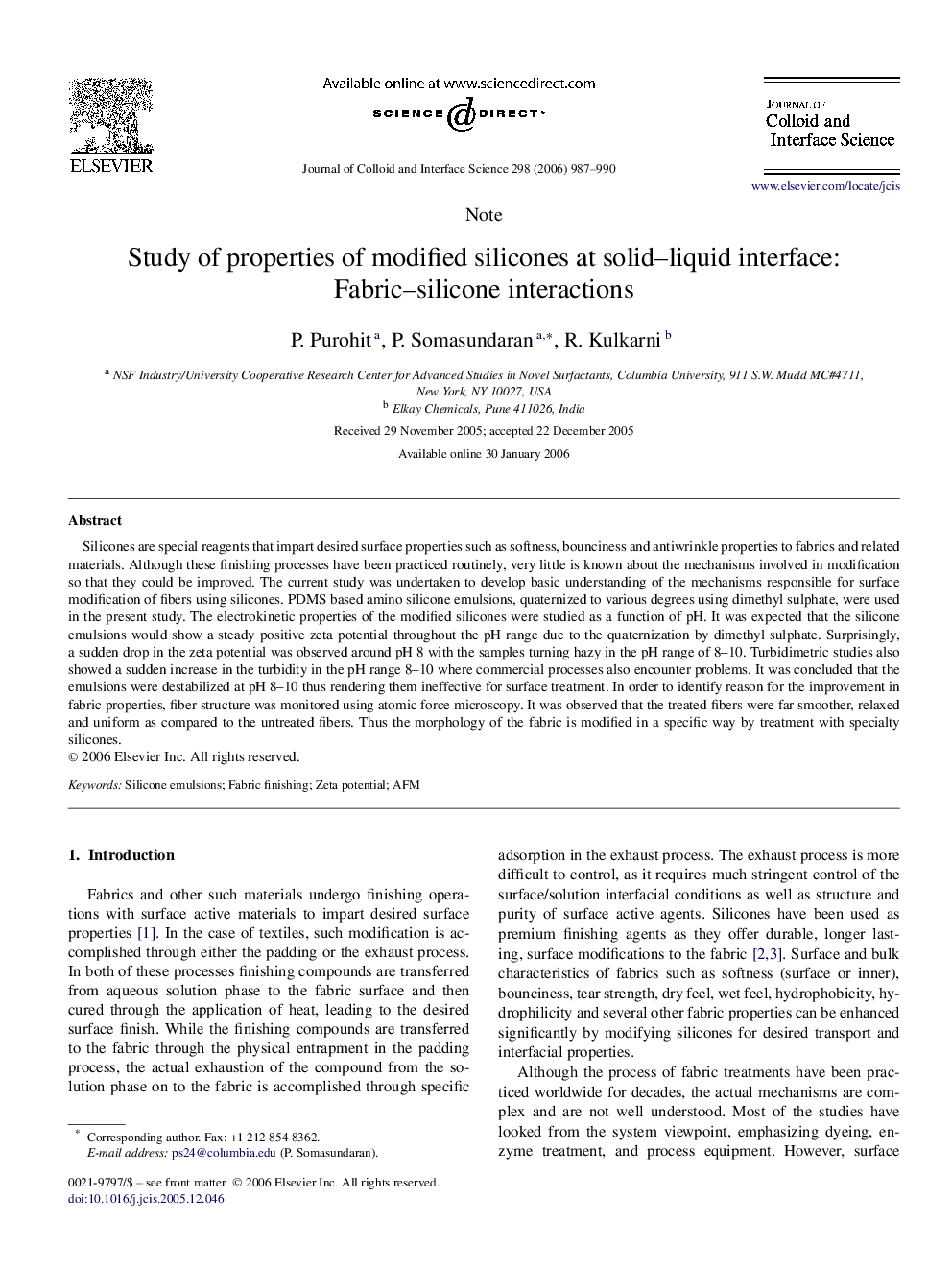| Article ID | Journal | Published Year | Pages | File Type |
|---|---|---|---|---|
| 613721 | Journal of Colloid and Interface Science | 2006 | 4 Pages |
Silicones are special reagents that impart desired surface properties such as softness, bounciness and antiwrinkle properties to fabrics and related materials. Although these finishing processes have been practiced routinely, very little is known about the mechanisms involved in modification so that they could be improved. The current study was undertaken to develop basic understanding of the mechanisms responsible for surface modification of fibers using silicones. PDMS based amino silicone emulsions, quaternized to various degrees using dimethyl sulphate, were used in the present study. The electrokinetic properties of the modified silicones were studied as a function of pH. It was expected that the silicone emulsions would show a steady positive zeta potential throughout the pH range due to the quaternization by dimethyl sulphate. Surprisingly, a sudden drop in the zeta potential was observed around pH 8 with the samples turning hazy in the pH range of 8–10. Turbidimetric studies also showed a sudden increase in the turbidity in the pH range 8–10 where commercial processes also encounter problems. It was concluded that the emulsions were destabilized at pH 8–10 thus rendering them ineffective for surface treatment. In order to identify reason for the improvement in fabric properties, fiber structure was monitored using atomic force microscopy. It was observed that the treated fibers were far smoother, relaxed and uniform as compared to the untreated fibers. Thus the morphology of the fabric is modified in a specific way by treatment with specialty silicones.
Graphical abstractFiber structure studied using atomic force microscopy shows that the silicone treated fibers (right) were far smoother, relaxed and uniform as compared to the untreated fibers (left).Figure optionsDownload full-size imageDownload as PowerPoint slide
